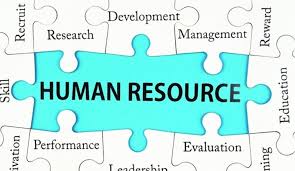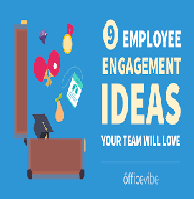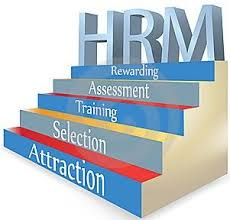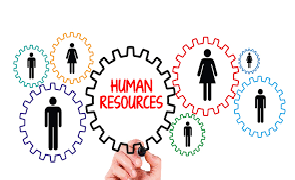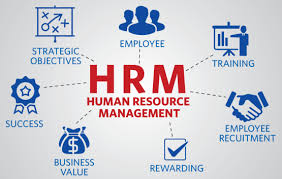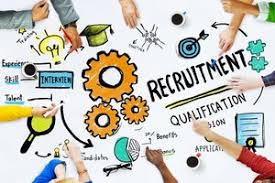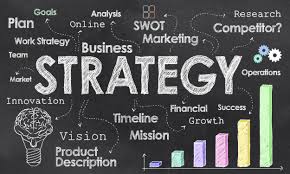
Human Resource Management and Business Strategy
Order Instructions:
Dear Admin,
I need an essay in the following subject:
As an organisational leader with an interest in or responsibility for HR, knowing your organisation’s strategy is the first step to taking on a more strategic role. To become a true strategic business partner, you need to consider the value of aligning your HR management practices with your organisation’s strategy and weigh the many options for doing so.
This essay will introduce you to ways of thinking about strategic HRM, including some perspectives that call into question ideas that many leaders take as ‘given.’ One of the expectations of an HR professional who has completed an advanced degree is that you will be able to think critically about different ideas and perspectives and make an educated and informed choice, rather than simply accepting commonly-held notions. Use this opportunity to practice this kind of thinking.
To prepare for this essay:
Read the Required Learning Resources that are attached.
Reflect on what you have read about the nature of business strategy, the potential for alignment between HRM practices and business strategy, and the notion of an HR strategy. Consider to what extent you have experienced or observed aspects of these ideas in organisations.
Critically analyse the notion of aligning human resource management policies and practices with business strategy, including the benefits and challenges of different approaches HR leaders can take to achieve this alignment.
What are the advantages and disadvantages of the ‘best practice’ and ‘best fit’ approaches (Armstrong, 2003) as a means of linking business strategy and HRM?
How could using one of these approaches to the selection of HRM practices aid in the creation of an HR strategy for the organisation?
What other aims should HRM have in addition to aligning with business strategy?
What has been your experience in organisations regarding the alignment of HRM and business strategy?
What aspects of concepts presented in your readings have you observed or experienced?
The following conditions must meet in the essay:
1) I want a typical and a quality answer which should have about 830 words.
2) The answer must raise appropriate critical questions.
3) The answer must include examples from experience or the web with references from relevant examples from real companies.
4) Do include all your references, as per the Harvard Referencing System,
5) Please don’t use Wikipedia web site.
6) I need examples from peer reviewed articles or researchs.
Appreciate each single moment you spend in writing my paper
Best regards
SAMPLE ANSWER
Human Resource Management and Business Strategy
Organizations adapt to different business strategy they deem appropriate to enable them achieve their aims and goals. The concept of human resources strategy has as well become very essential in ensuring that businesses achieve their set goals and objectives. The paper deliberates on issues pertaining to business strategy, alignment between HRM practices and business strategy and HR strategy among many other aspects.
Various researchers define strategy differently however, it refers to the scope and direction on an entity over a longer term and must match the available resources to its changing environment, customers, and markets and should meet the expectations of the stakeholders. Strategy therefore provides a direction of a business (Chandan, Sitaram & Bijaya 2011). Business strategy therefore focuses on achieving a competitive advantage in a certain environment. Managers of an organization have the responsibility of developing an appropriate strategy that can propel the organization forward and towards achievement of their goals. A business strategy must be in tandem or be aligned with the Human Resources management practices to meet the set goals and aims. The interest of the employees and the organizations require strategic integration to ensure proper utilization of human resources to achieve the set goals (Dutch 2013). Employer- employees’ relationships should remain strong for the organization to achieve its strategic business objectives. The business strategies as well as human resource practices such as recruitment must be responsive to the changes in business environment coupled with changes in demographics of workforce, increased globalization, increase focus of profitability through technological change, growth, intellectual capital and many other changes organizations experience.
Human resource strategy is as well critical in achieving competitive advantage. Organization is required to use planning to come up with consistent approaches that match HRM policies and activities for business strategy (Katou & Budhwar 2008). Employees must be viewed as strategic resources in achieving competitive advantage of an entity. Therefore, through HR strategy, appropriate modalities are generated to address issues pertaining to staffs to ensure that the entity has the right people that will promote goal achievement and increase productivity.
Many organizations have embraced the ideas of business strategy hence; align their HRM with their business strategies to achieve a competitive advantage. Example of these organizations includes Coca Cola, General Electric and Microsoft among many others. These entities have managed to remain competitive because of their commitment to their employees. They have cultivated positive relationships that have played a critical role in their success.
Aligning human resource management policies and practices with business strategy is a trend many organizations have adopted to enable them achieve their goals and achieve competitive advantage. Managers have a duty to adapt to appropriate strategies to be able to meet the needs of their entities. In recruiting their employees for instance, they need to recruit those capable of delivering high productivity. This integration should achieve strategic fit through vertical and horizontal integration. It contributes to achievement of congruence between the business and human resource strategy and ensures that various elements of HR strategy fit together and support each other mutually. The alignment should as well be complacent with the organizational culture, as this will facilitate their achievement. Human resource strategies should focus on developing employee relations, management of talent, and provision of reward system, continuous improvement, resourcing, and learning and development of employees.
Achievement of these alignments requires HR leaders to adapt to various approaches such as resource based which have various frameworks including, high performance management, high commitment management and high involvement management (Chandan, Sitaram & Bijaya 2011). The advantage of resource-based approach is that it lays more emphasis on human capital. Effective deployment of resources allows an entity to obtain added value as is possible to have a strategic fit between resources and opportunities. Challenges of the model are that it requires heavy investment in people through training and development, motivation among many others (Byars & Rue 2000). Managers can as well adapt to high performance management approach where a number of interrelated processes are developed together to impact on the productivity of an entity. This helps an entity to trigger increased profitability. However, the challenge is that it requires leaders with vision, to create momentum and a sense of direction. Furthermore, the progress requires constant measurement. Another approach is high commitment management model that promote mutual commitment (Chandan, Sitaram & Bijaya, 2011). Employees should self regulate themselves and need not to be controlled by pressures and sanctions but rather relationships need to be built on trust. This model therefore has advantage as it triggers innovation and commitment. The challenges are that, it requires a vision and a consistent leader to trigger the spirit of trust. The last approach is high involved where employees are treated as partners to the enterprise. The advantage is that, employee communication and involvement increases productivity. The challenges are that decision making process is likely to delay.
Best practices relate to the universal success of certain HR practices. Its advantage to aligning business strategy and HRM is that it promotes overall organization productivity while disadvantage is that it may not provide growth indicators at various levels of an entity. On the other hand, best fit focuses on contextual factors. Its advantage is that it allows understanding of performance of a given sector while disadvantage is that it is not appropriate to assess the overall productivity of an organization (Armstrong, 2006).
For instance, selecting high involvement management approach can aid in creation of HR strategy, as it requires that certain issues be adhered. These issues include creation of good climate to promote dialogue between managers and staffs. Modalities to engage are required to help in definition of expectations, to share information about values, missions and objectives of an entity among many other issues. Through this process, it becomes easy to formulate HR strategies to trigger competitive advantage.
Apart from aligning with business strategy, HRM should as well aim at promoting other issues relating to environmental sustainability, corporate social responsibilities and ensure that they promote the welfare of the employees as they pursue growth and productivity (Cooke & Saini 2010).
I have experienced alignment of HRM and business strategy in various organizations I have worked. Most of the organizations have managed to achieve their goals and recorded increased productivity. Employees’ motivation and positive relationships between the managers and employees played a key role in these organizations competitive advantage.
I have therefore experienced various concepts presented in this reading. Concepts such as resources based approaches, competitive advantage, HRM strategies, business strategies are some of the common concepts that I have observed adopted in the various organizations. Organizations are investing more in competent human capital as the source of their competitive advantage.
References list
Armstrong, M 2006, Hand Book of Human Resource Management Practice, Kogan Page limited, Philadelphia.
Byars, L, & Rue, L 2000, Human resource management, Mc. Graw-Hill, Boston.
Chandan, K., Sitaram, D., & Bijaya, K. (2011). Strategic Human Resource Management: Exploring the Key Drivers’, Employment Relations Record, vol. 11 no. 2, pp. 18-34.
Cooke, F, & Saini, D 2010, ‘(How) Does the HR strategy support an innovation oriented business strategy? An investigation of institutional context and organizational practices in Indian firms’, Human Resource Management, Vol. 49 no. 3, pp. 377-400.
Dutch, M 2013, ‘A Symbiotic Framework of Human Resources, Organizational Strategy and Culture’, Amity Global Business Review, Vol. 8, pp. 9-14.
Katou, A, & Budhwar, P 2008, ‘The effect of business strategies and HRM policies on organizational performance: The Greek experience’, Global Business & Organizational Excellence, Vol. 27 no. 6, pp. 40-57.
We can write this or a similar paper for you! Simply fill the order form!





